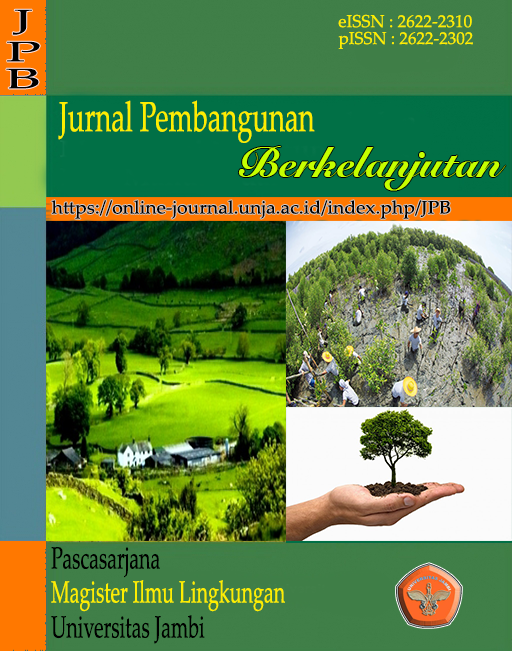Analysis of Factors Related to 3R-Based Waste Management Site in Jambi City
DOI:
https://doi.org/10.22437/jpb.v3i2.10018Keywords:
Analysis, Factors, RelatedAbstract
The objective of this study is to analysis of factors related to the functioning of 3R-based waste management site in Jambi City. The factors are consists of internal factors and external factors. The internal factors are individual characteristic (age, gender, job status, education, income), knowledge and attitude. The external factors are regulation, community participation and local government support. Design of this study is cross sectional design with 100 respondents as the samples. Proportional stratified random sampling is used as sampling technique and questionnaire is used to collect the data. The result of this study showed that the good functioning of 3R-based waste management site is 56%, and 44% has bad functioning. Based on Chi Square test showed that there were factors related to the functioning of 3R-based waste management site. They were knowledge, attitude, community participation and local government support. Based on linier regression test showed that community participation (95% CI: 0,815-9,661) was the most dominant factor related to the functioning of 3R-based waste management site which are controlled by knowledge, attitude and local government support. The conclusion of this study is to increase the functioning of 3R-based waste management site in Jambi City, the community participation have to developed by increasing the education about waste management with 3R-concept, also the increasing of local goverment support by coaching about the importance of 3R-based waste management site in Jambi City.
Downloads
Downloads
Published
How to Cite
Issue
Section
License
Copyright (c) 2020 Jurnal Pembangunan Berkelanjutan

This work is licensed under a Creative Commons Attribution 4.0 International License.
1. Authors retain copyright and grant the journal right of first publication with the work simultaneously licensed under a Creative Commons Attribution 4.0 International License that allows others to share the work with an acknowledgement of the work's authorship and initial publication in this journal.
2. Authors are able to enter into separate, additional contractual arrangements for the non-exclusive distribution of the journal's published version of the work (e.g., post it to an institutional repository or publish it in a book), with an acknowledgement of its initial publication in this journal.
3. Authors are permitted and encouraged to post their work online (e.g., in institutional repositories or on their website) prior to and during the submission process, as it can lead to productive exchanges, as well as earlier and greater citation of published work (The Effect of Open Access)











